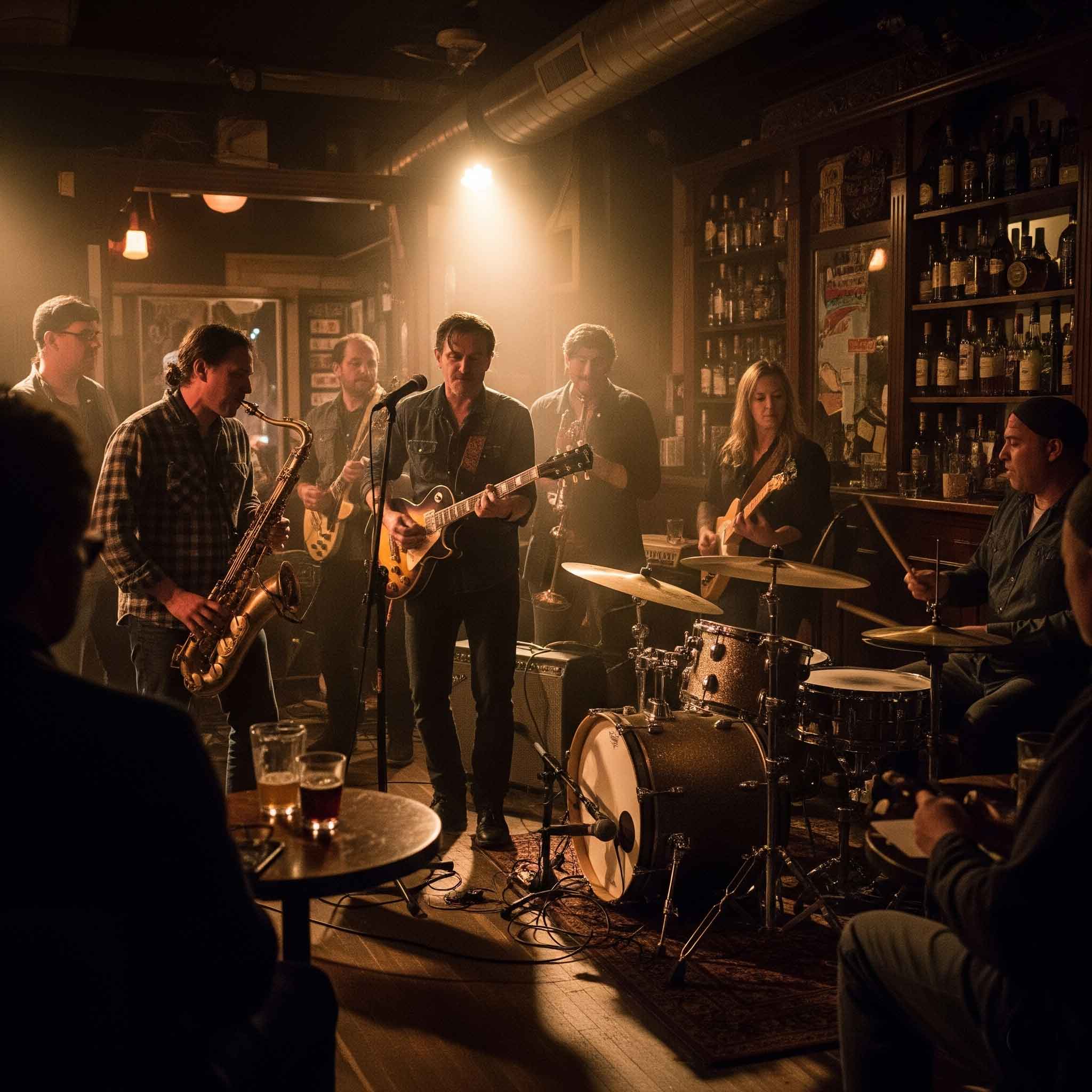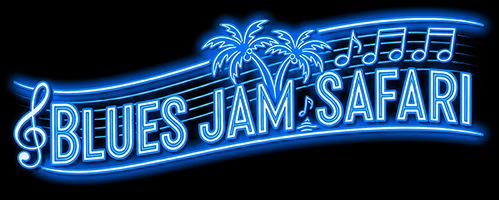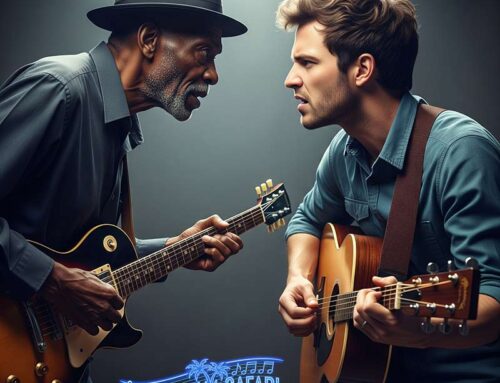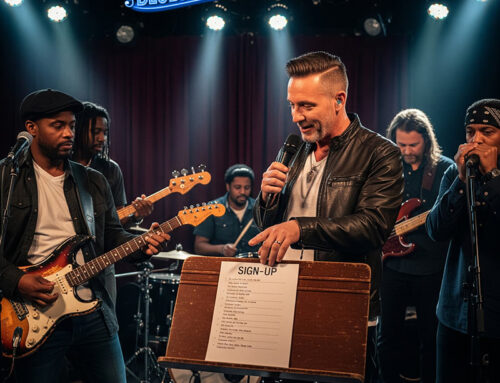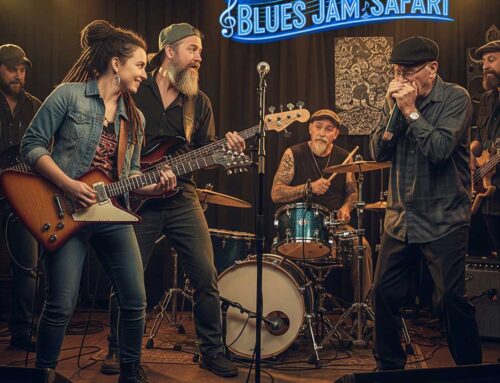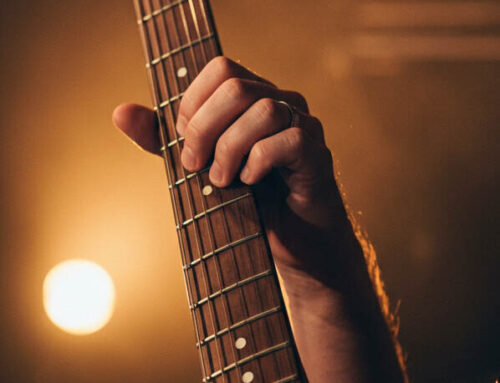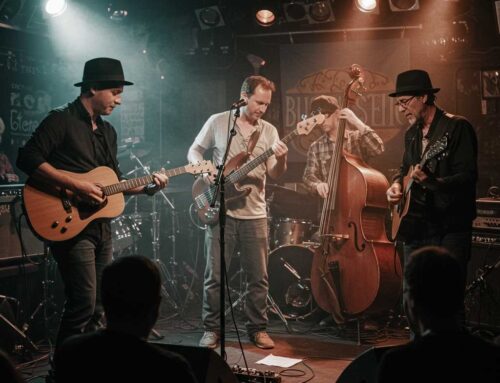The Blues Jam: Where Music’s Evolution Ignited
By: Richard Harvey
Step into any dimly lit bar on a Tuesday night, listen closely to the crackle of an overdriven amp, and watch as musicians, some strangers, some old friends, fall into a spontaneous groove. This isn’t just a casual gathering; it’s a direct descendant of one of music’s most fertile grounds: the blues jam. More than just a practice session, the blues jam has been a secret laboratory, a communal classroom, and a launching pad for virtually every popular music genre that followed. Let’s trace this incredible lineage.
The Primordial Soup: Early Blues and Its Informal Jams
Before “blues jam” was a term, the practice itself was the very essence of the music. In the juke joints of the Mississippi Delta, on dusty front porches, or around campfires, musicians learned by doing. There were no sheet music, no formal arrangements. It was all about call-and-response – a guitar answering a vocal moan, one musician picking up a riff from another, stretching it, bending it, making it their own. This was raw, improvised, and deeply communal. The constant repetition of simple forms (like the nascent 12-bar structure) provided a solid, intuitive foundation for endless variation. This spontaneous, fluid exchange of ideas, where listening was as crucial as playing, was the original blues jam – the very DNA of improvisation and musical conversation.
Jazz: The Jam Gets Sophisticated
As the blues moved from rural fields to urban centers like New Orleans, it met new influences: ragtime’s syncopation, European classical harmony, and the vibrant brass band tradition. From this crucible, Jazz emerged. But the core principle of spontaneous creation remained, amplified by new instrumental combinations. The jazz jam session, with its familiar “head-solos-head” structure, is a direct, sophisticated evolution of the blues jam. Musicians would take a blues tune (the “head”), and then each instrumentalist would launch into an improvised solo over the familiar chord changes, pushing harmonic boundaries and rhythmic complexities. The “cutting contests” of early jazz were intensely competitive jams, where musicians honed their skills and established their reputations, directly building on the blues’ emphasis on personal expression and virtuosic improvisation within a shared framework.
R&B and Soul: The Groove Takes Center Stage
Post-WWII, as electrification spread and African American communities swelled in northern cities, the blues jam began to pulse with a new energy. The acoustic guitars gave way to electric instruments, and the backbeat became more prominent, influenced by gospel fervor and a growing desire to make people dance. Rhythm & Blues (R&B) and later Soul music embraced the blues jam’s improvisational spirit, but channeled it into a tighter, groovier package. Live R&B and soul bands, often playing extended sets, would frequently break into extended instrumental sections, allowing soloists to stretch out over driving rhythms. The call-and-response between horns, rhythm section, and vocalist echoed the blues’ conversational nature, creating an infectious, often spontaneous groove that was still fundamentally a jam, albeit with more structured arrangements for commercial appeal. Think of James Brown’s notoriously tight but incredibly dynamic band – a unit where individual musicians had to react and improvise in real-time to the “funk” laid down by the bandleader.
Rock & Roll: The Amplified Rebellion
The true seismic shift came when the blues jam met amplified instruments and a rebellious youth culture, giving birth to Rock & Roll. Early rock and roll, particularly in its rawest forms from Chess Records and Sun Studio, was often nothing more than electrified blues jams. Chuck Berry’s guitar riffs were direct descendants of blues licks, sped up and amplified. Elvis Presley’s vocal delivery borrowed heavily from R&B and blues singers. The extended guitar solo, a cornerstone of rock, is a direct inheritance from the blues jam, where guitarists would improvise for choruses on end. Later, the British Blues Boom of the 1960s saw bands like The Rolling Stones, Cream, and Led Zeppelin taking the blues jam formula – loud, improvisational, raw – and electrifying it to unprecedented levels. Their live shows were often extended jams on blues standards or blues-derived originals, pushing the boundaries of what electric guitars, bass, and drums could do spontaneously. Jimi Hendrix, the ultimate blues-rock innovator, was a living, breathing blues jam, transforming simple blues structures into psychedelic improvisational journeys.
Funk and Jam Bands: The Groove Deepens and Explores
The blues jam’s influence continued to branch out. Funk music, pioneered by artists like James Brown and Parliament-Funkadelic, intensified the groove aspect of the R&B jam. It broke down the traditional blues solo into interlocking, percussive rhythms, where every instrument became part of the collective improvisation that created the “one.” While less about individual soloing, the spontaneous interplay and the creation of an almost hypnotic groove were direct descendants of the blues jam’s collective spirit. Simultaneously, the Jam Band scene (think The Grateful Dead, Phish, Widespread Panic) took the improvisational ethos of the blues jam and expanded it exponentially. Their concerts were literally extended jams, often using blues forms or blues-rock structures as launching pads for hours of collective musical exploration, always returning to a familiar theme, much like a blues band endlessly exploring a 12-bar progression.
The Enduring Legacy: From Studio to Streets
Even in genres like hip-hop, where the direct jam format is less overt, the spirit of the blues jam lives on. The art of sampling, of taking a foundational groove or riff and recontextualizing it, improvising over it with vocals, mirrors the blues jam’s ability to create something new from existing elements. The emphasis on individual lyrical flow over a repeating beat can be seen as a modern vocal “solo” over a foundational “groove.”
From the humble juke joint to the stadium stage, the blues jam has been the consistent, pulsating heart of popular music’s evolution. It taught musicians to listen, to respond, to improvise, and most importantly, to feel. So the next time you hear a soaring guitar solo, a tight rhythm section locked in a groove, or a collective musical conversation unfolding spontaneously, remember its roots. You’re hearing the everlasting echo of the blues jam.
